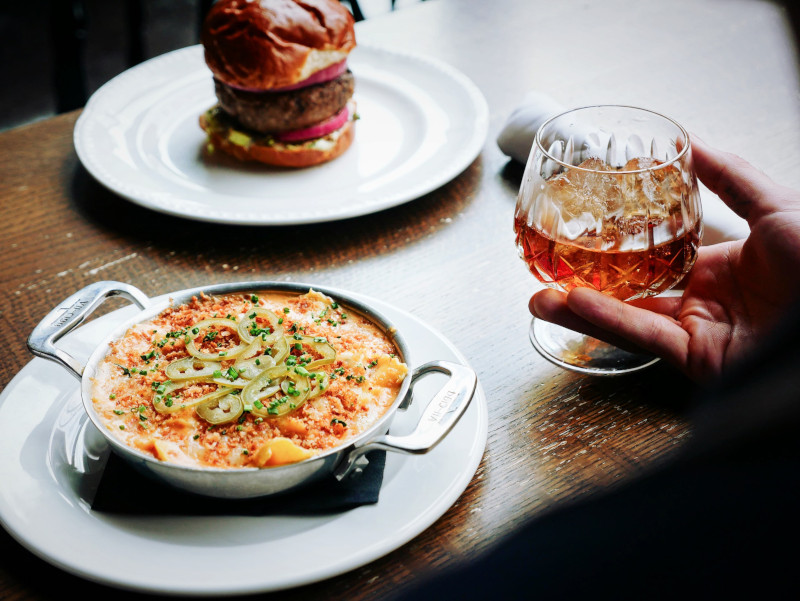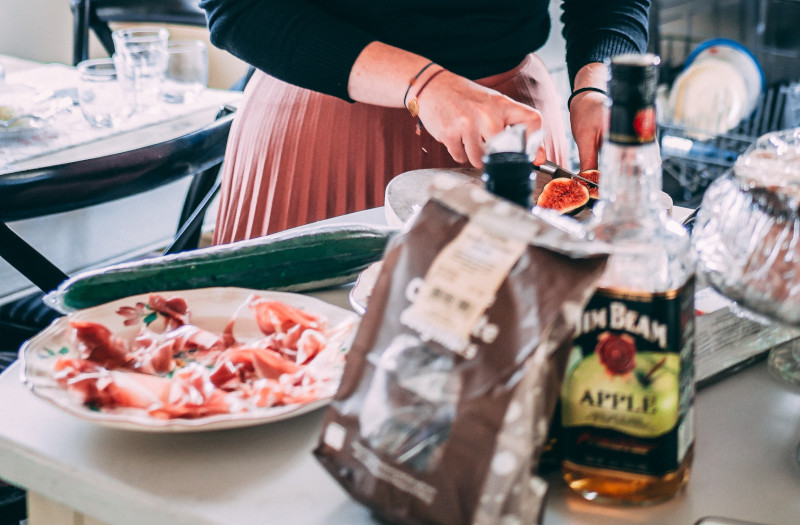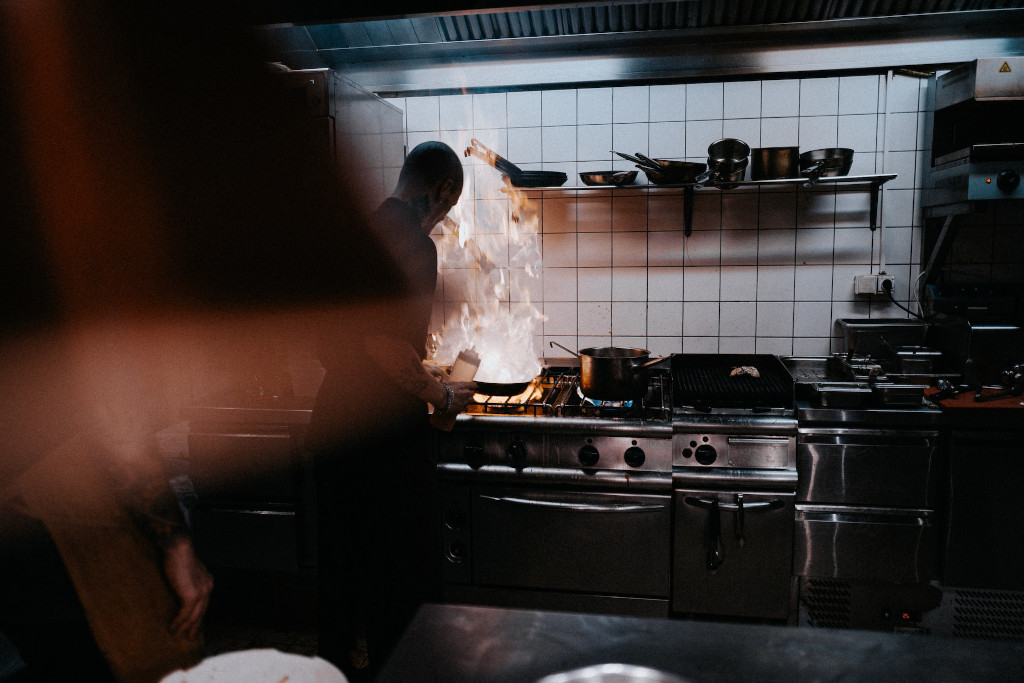There’s a fascinating trend that may not have made headlines yet but is making waves in the busy kitchens of America’s finest restaurants. Reputable kitchens are shifting away from wine in favor of whisky, an unexpected beverage choice. Several of America’s top chefs have come out in support of this spirit, which is lauded for its complex flavors and rich history.
I’m wondering whether you’re familiar with Chef Sean Brock. Located in Music City, Brock’s passion for Southern cuisine complements the many flavors of American whiskies. His food, which frequently alludes to the South’s storied past, makes a lovely backdrop for whiskies and bourbons. You may experience this skill in pairing for yourself by spending the evening at one of his restaurants like Husk. His approach is less about overwhelming taste buds and more about finding spiritual harmony via eating.
And then there’s Louisville’s own Chef Anthony Lamas of the Latin eatery Seviche. Lamas combines the spiciness of Latin food with the depth of whisky flavors. His skills are well-known, and he has been quoted numerous times on his enthusiasm for enhancing the flavor of whisky with dishes like ceviche and mofongo.
You may have heard of Chef Dominique Crenn, the brains behind Atelier Crenn in San Francisco if you live on the West Coast. While wine may be her first love, you may find whiskies on her tasting menus, especially with smokey or earthy cuisine. Her whisky-infused sauces, if you can get your hands on them, are reason enough to visit.
At their tables, you will learn more about whisky than you ever thought possible. These cooks, along with many others like them, are pioneers. Looking at how some of America’s most famous chefs employ whisky in their dishes, it’s evident that this alcohol has many more uses than just in a glass. But how can these chefs balance the complex flavors of whisky with the flavors of the food they prepare?
Making Whiskey The Star of Your Dishes

1. Understanding the Whisky Spectrum
Before pairing, it’s crucial to decipher the notes in whisky:
- Peated Whiskies: Known for their smoky character, think Islay malts.
- Sherried Whiskies: Rich, dark, and fruity. Often found in Spanish oak casks.
- Bourbons: Sweet with hints of caramel, vanilla, and oak.
- Rye Whiskies: Spicier and often a bit drier than bourbon.
2. Basic Principles of Whisky Pairing
- Complement: Match-like flavors. If your whisky has caramel notes, a caramel dessert might be the perfect match.
- Contrast: Opposites can attract. A smoky whisky might pair well with sweet, creamy dishes.
- Cleanse Whisky, especially high-proof ones, can cleanse the palate, readying it for the next bite.
3. Starters & Whisky: Light and Delicate
For appetizers, opt for lighter whiskies. Think Glenmorangie Original with its citrus notes or a gentle Irish whiskey. They pair wonderfully with:
- Seafood dishes like scallops or shrimp cocktails.
- Light salads with vinaigrette dressings.
- Cream-based soups.
4. Mains & Whisky: Robust Flavors
This is where bolder whiskies come into play. The meaty mains require whiskies that can hold their own.
- A rich bourbon like Maker’s Mark can pair with BBQ ribs or pulled pork.
- Spicy rye whiskies are great with dishes that have a kick, like spicy BBQ chicken.
- Peated whiskies like Laphroaig can stand up to game meats or dishes with strong earthy flavors.
5. Cheese & Whisky: A Match Made in Heaven
- Blue cheese pairs with a strong, peaty Scotch.
- Brie or camembert can go with a floral, light whisky.
- Aged cheddar with sherried or bourbon whiskies.
6. Desserts & Whisky
- Chocolate desserts are a match for whiskies with deep, roasted notes. Think Aberlour or even a rich bourbon.
- Creamy desserts like panna cotta or cheesecake can pair with spicy rye whiskies.
- Fruit-based desserts, like tarts or pies, go well with fruity whiskies.
7. Cooking with Whisky
- Deglazing: After pan-searing meat, add a dash of whisky to lift those caramelized bits, creating a flavorful sauce.
- Marinades: Bourbon can be a base for a marinade, imparting its sweetness to meats.
- Desserts: Whisky-infused chocolate truffles or a whisky caramel sauce can elevate your dessert game.
8. European Pairings: Crossing the Atlantic
For European audiences, consider the rich culinary heritage:
- French Cuisine: Think coq au vin with a dash of Scotch instead of wine. Or crêpes Suzette with a whisky-based sauce.
- Italian Delights: A whisky-infused tiramisu or risotto cooked with a splash of whisky instead of wine.
9. Always Consider the Proof
Higher-proof whiskies, often preferred by enthusiasts, can overpower many dishes. When pairing, it’s essential to consider diluting or choosing a dish that can stand up to the intensity.
10. Experiment & Experience
The world of whisky pairing is vast, and while there are guidelines, there’s no strict rulebook. It’s about personal preference and the thrill of finding that perfect match.
FAQ on Cooking with Whisky

Q: Can you use any type of whisky in cooking? A: While you can technically use any whisky, it’s essential to understand the flavor profiles. Just as with wine, if you wouldn’t drink it, you probably shouldn’t cook with it. Remember, smokier whiskies like some Scotches might overpower a dish, while a milder bourbon can add sweetness.
Q: How do you avoid overpowering a dish with whisky? A: Always start with a small amount and gradually add more to taste. Cooking often reduces the alcohol content but intensifies the flavors. For delicate dishes, consider using the whisky in a sauce or glaze rather than incorporating it directly.
Q: Is it necessary to burn off the alcohol when cooking with whisky? A: It depends on your desired result. If you’re aiming for a strong whisky flavor, you might not want to burn off all the alcohol. However, for a more subtle taste or if serving to children, letting it simmer will reduce the alcohol content while retaining the essence.
Q: How can I pair whisky with spices in my dishes? A: Whisky naturally complements many spices. For instance, the vanilla notes in many bourbons work well with cinnamon, nutmeg, and clove. Meanwhile, the peaty flavor in some whiskies can be a great match for cumin or smoked paprika. Trust your palate and experiment!
Q: Can whisky be used in both savory and sweet dishes? A: Absolutely! While many think of whisky for desserts, like chocolate fondue or caramel sauce, it’s also fantastic in savory dishes. Imagine a whisky glaze for your grilled meats or adding a splash to a creamy pasta sauce.
Q: Are there benefits to using whisky in marinades? A: Yes! The alcohol in whisky can help tenderize meats, making it excellent for marinades. Additionally, its flavors can penetrate the meat, adding depth and complexity to your dish.
It’s evident that the fusion of these two elements is more than just a culinary experiment—it’s an art form. Recognized chefs have carved out a niche, combining the rich nuances of whiskies with a diverse array of ingredients. Armed with these insights and practical tips, you’re well-prepared to experiment in your kitchen, exploring the myriad of flavors that whisky can introduce to your culinary creations.

